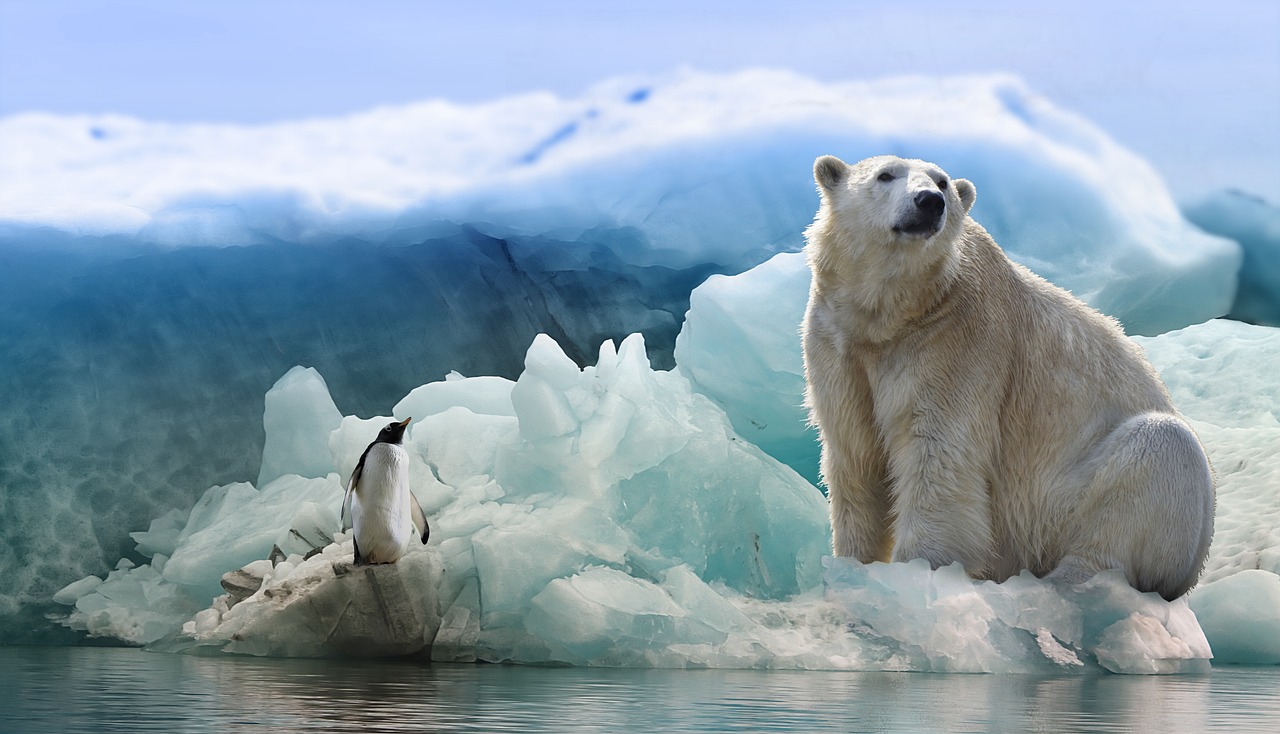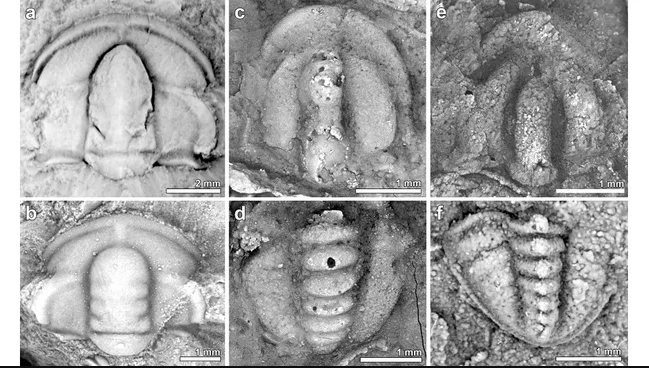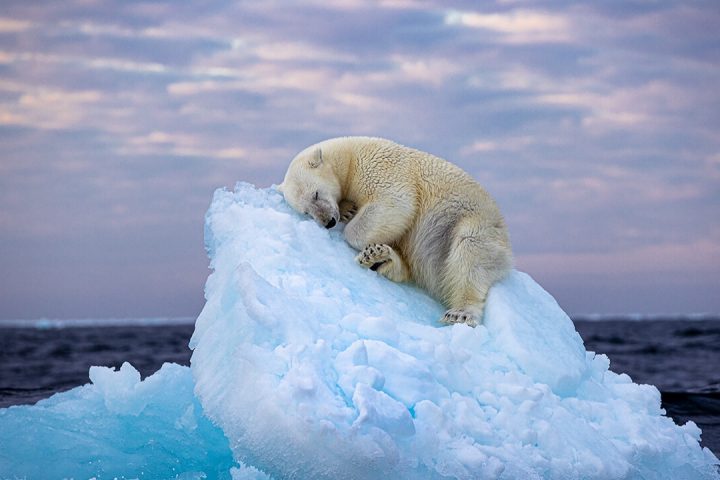The research shows that polar bears in Hudson Bay lose weight in the summer months, as sea ice recedes and they are forced to move onto land.
According to research published Tuesday in the journal Nature Communications:
- During the summer months, polar bears have to move onto land to find the food they need.
- Although some bears find different food sources such as berries, eggs, seabirds and caribou antlers, they spend a lot of calories to find food.
- The study found that 19 of the 20 bears studied dropped an average of 47 pounds (21 kilograms) in three weeks.
- This means that, on average, they lost about 7% of their body mass in just 21 days.
- Polar bears feed by hunting seals on the sea ice. Declining sea ice makes it harder for polar bears to hunt seals.
Researchers say this threatens the polar bears’ long-term survival chances.
US Geological Survey Wildlife Biologist Anthony Pagano, lead author of the study:
- “Polar bears are experiencing the effects of climate change. “Declining sea ice is forcing them onto land and less nutritious food.”
- “This is causing polar bears to lose weight and become emaciated. This reduces their chances of long-term survival.”
Last September, when Arctic sea ice reached its annual low, there was about 1 million square miles (2.6 million square kilometers) less sea ice compared to the same period in 1979, according to the National Snow and Ice Data Center. The United States Fish and Wildlife Service lists polar bears as a threatened species “due to loss of sea ice habitat”.
“This paper clearly shows that polar bears are not adapting to the pace of change in the Arctic and that bears are using everything they already have to survive,” said University of Alberta biologist Andrew Derocher, who was not part of the study but called the research extremely elegant and insightful.
“This is worrying because it raises the question of when the bears will run out of energy,” Derocher said. While research showed that some bears would be fine, “other bears were potentially just over the limit where they would suffer from starvation and subsequent death.”
Derocher said this shows that polar bears in general are unlikely to adapt to living on land.
When the sea freezes, polar bears feast on seals. Not only with seals, but also with their fat. USGS wildlife biologist Karyn Rode said that when on the ice, about 70% of polar bears’ diet is fat.
“They have the highest fat content diet of any species on Earth,” Rode said.
University of Washington biologist Kristin Laidre, who was not part of the study team, said, “polar bears need sea ice to feed – that’s how they get to their primary prey (ice seals). They evolved from grizzly bears to live on a fatty marine diet and have an extraordinary ability to consume and digest lipids.”
To understand what was happening on land, a joint US-Canadian team of biologists attached video to the bears’ collars, fed them a type of water that allowed them to track their caloric intake and expenditure, and released them back into the wild for monitoring.
The bears’ food hunt was impressive. All but one ate grass and moss, 10 feasted on blackberries, eight gnawed on bird carcasses, a third chewed on bones and four ate caribou antlers, as well as bird eggs, a rodent and a rabbit.
But the bears had to expend a lot of energy to feed themselves. On average, they traveled 58 miles (93 kilometers) and one young female covered 233 miles (375 kilometers) in three weeks.
“This paper adds to the growing evidence that polar bears will not be able to survive on land as we continue to lose sea ice due to climate warming,” said Laidre, who chairs the polar bear expert group of the International Union for Conservation of Nature, the international organization that monitors the status of endangered species.





